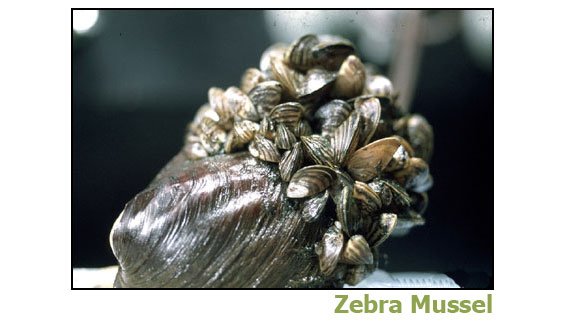
Zebra Mussel
Photo credit: Randy Westbrooks, U.S. Geological Survey, Bugwood.org
What is it?
A shellfish named for its striped shell, growing up to 2 inches long
Where's it from?
Native to Russia; spread to western Europe in the 19th century
How did it get here?
First identified in the U.S. in 1988 in the Great Lakes region, it probably arrived in the ballast of a transatlantic ship.
Where is it now?
In less than ten years, it spread to all five Great Lakes and the Mississippi, Tennessee, Hudson and Ohio River basins.
What's the harm?
Zebra mussels form dense colonies of as many as one million individuals per square meter on any hard surface, including boats, pipes, piers, docks, plants, clams and even other Zebra mussels. The U.S. Fish and Wildlife Service has estimated a $5 billion economic impact over a 10-year period from the costs of activities such as cleaning and maintenance of water intake pipes, removal of shell build-up on recreational beaches, and control efforts.
What's being done?
Zebra mussel was discovered in one quarry pond in northern Virginia in 2003. VDGIF is leading control efforts. Early detection and response has thus far prevented zebra mussel from becoming established in Virginia.
 Virginia Invasive Species
Virginia Invasive Species